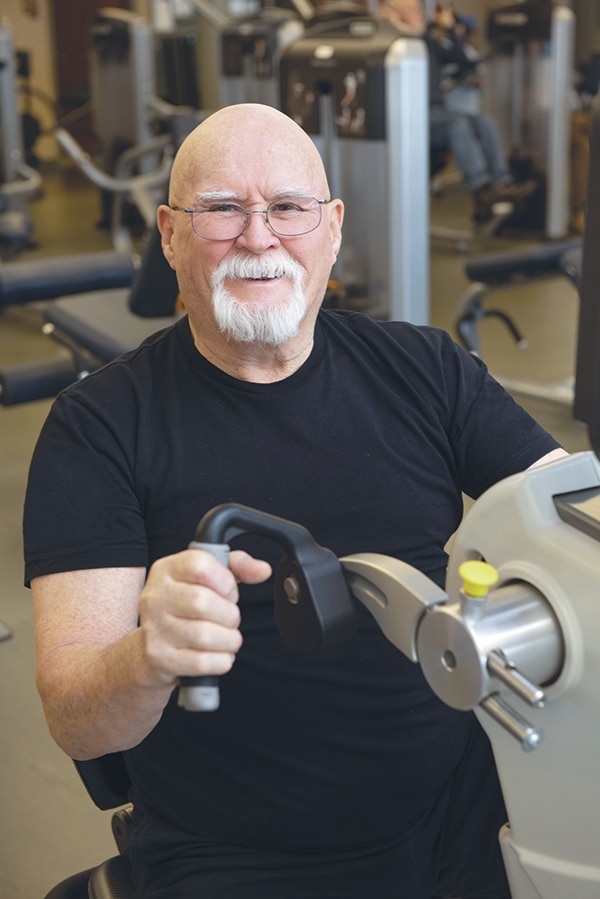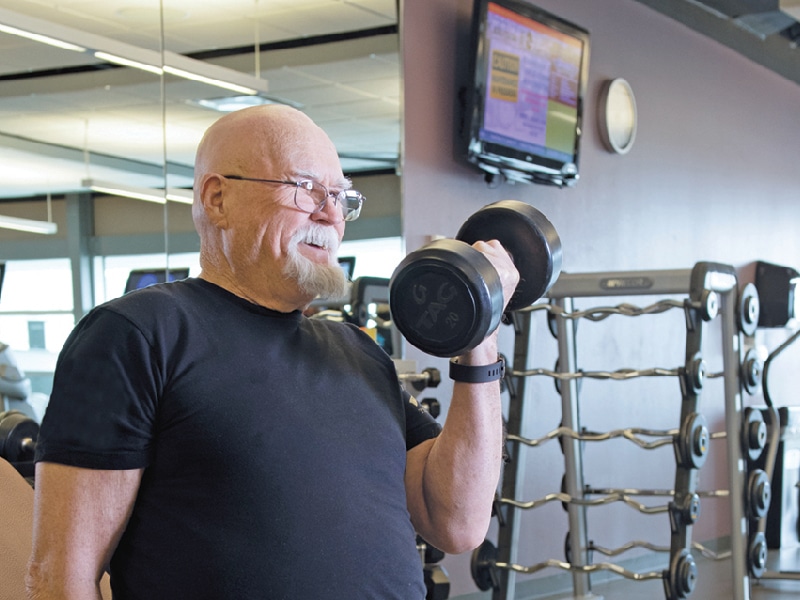See what good advice Bruce Johnson gleaned from a diabetes workshop
Bruce Johnson thought he was well-versed in how to manage his diabetes. After all, two of his four daughters work in the medical field, and Bruce is a former competitive powerlifter. He stays fit working out 90 to 120 minutes a day, three days a week in the gym he created in his garage or at The Summit in Grand Prairie. “However, I still had problems with my most critical enemy: my diet,” Bruce says.
So in 2015, Bruce started attending the free Heart Health and Diabetes Workshop at Methodist Charlton Medical Center. His wife had regularly attended the workshops for months, and now he was ready to join her.
Saleemah Fahmi, MD, endocrinologist on the Methodist Charlton medical staff, knows that Bruce isn’t alone in the struggle to find food options that work with his diabetes.
“The biggest issue is that patients aren’t doing enough to get protein in the form of lean meats and fiber in the form of vegetables,” she says.
Luckily, Bruce has picked up several new tips for his diet and overall health at the monthly workshops. Here are a few that might help you as well, along with some more insight from Dr. Fahmi.
1. Never stop learning. Diabetes educators, physician champions, and registered dietitians often lead discussions at the workshops, but the floor is open to discuss any challenges people are facing in managing their diabetes. “It’s very informative,” Bruce says. “I take notes on the class handouts so I can bring any follow-up questions to my doctors.”
Dr. Fahmi emphasizes having that ongoing dialogue with your doctor. “Ask about your target A1C score and blood sugar levels, as well as how medication might be helping or hindering your health goals,” she says.
2. Keep on exercising. Dr. Fahmi believes all patients with diabetes should follow Bruce’s lead and find a way to get active.
“I suggest that patients do something regularly — preferably for 45 minutes, five days a week,” she says. Exercise, particularly cardio workouts, can help lower the glucose level in your blood.

3. Pay attention to your A1C. “Your hemoglobin A1C reflects two to three months of your average blood sugar levels,” Dr. Fahmi says. “Target levels should be somewhere between a 6.5 and a 7.5 because keeping them in this range helps a patient reduce the risk of complications, including heart issues, diabetic kidney disease, amputations, and infections such as pneumonia.”
Since attending the class, Bruce says his A1C score has improved. At last check, it was just under 6.2!
4. Find your support system. Bruce attends the workshops at Methodist Charlton with his wife of 55 years. The couple is learning together how to improve their overall lifestyles. Bruce says his family inspires him to stay on track so he will be there for them in the future. He is also grateful for the support from the workshop leaders.
“Two things I hope that I’ve done in my life are to inspire my girls to learn and get a good education and to stay healthy, and I think I did,” he says.
IF YOU GO
Learn more about attending the Heart Health and Diabetes Workshop at Methodist Charlton.

